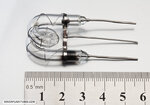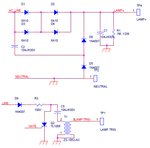cnandha19
Member level 3

SMART STROBE

Smart S**broken link removed**trobe: 750w AC flash stroboscope
1.Please tell me the working principle of the smart strobe 750W. I am using the (FT-ST-S40w) Spiral Helical strobe flash tube lamp.Per minute how many times it can flash. If i change the 40Watts into 100watts then how many times it can flash per minute.
XENON FLASH TUBE
**broken link removed**
FLSAH TUBE LINK :**broken link removed**


Smart S**broken link removed**trobe: 750w AC flash stroboscope
1.Please tell me the working principle of the smart strobe 750W. I am using the (FT-ST-S40w) Spiral Helical strobe flash tube lamp.Per minute how many times it can flash. If i change the 40Watts into 100watts then how many times it can flash per minute.
XENON FLASH TUBE
**broken link removed**
FLSAH TUBE LINK :**broken link removed**






